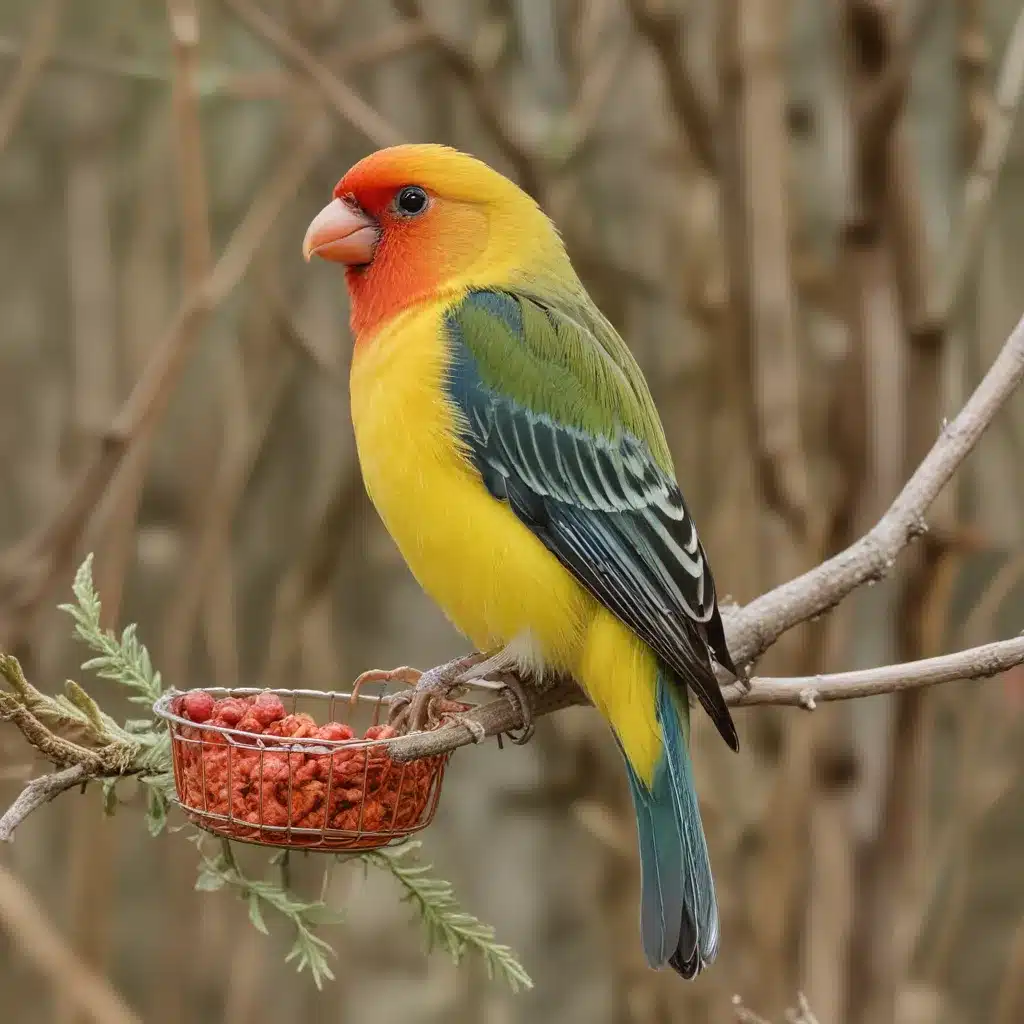
Avian Feeding Habits
Birds are remarkable creatures, each species uniquely adapted to thrive in their natural habitats. From the seed-cracking beaks of finches to the nectar-sipping tongues of hummingbirds, the diversity of avian feeding behaviors is truly astounding. As experienced avian caretakers, understanding these innate foraging habits is essential to providing our feathered companions with a stimulating and nutritious feeding experience.
Foraging Behaviors
At the heart of a bird’s daily activities lies the search for sustenance. Seed-eating species, like cockatiels and parakeets, often spend hours scouring the ground and vegetation for their preferred grains and nuts. Their sharp eyes and nimble feet allow them to deftly pluck and manipulate even the smallest seeds. Insectivorous birds, on the other hand, rely on their keen senses to locate and capture a variety of invertebrate prey, from spiders and beetles to caterpillars and flies. Hummingbirds, with their specialized tubular tongues, are masters of extracting nectar from vibrant flowers, flitting from bloom to bloom in a mesmerizing aerial dance.
Feeding Enrichment Techniques
Providing our pet birds with opportunities to engage in these natural foraging behaviors is crucial for their physical and mental well-being. One effective way to encourage foraging is through the use of puzzle feeders – toys that require the bird to manipulate, move, or dismantle them to access the hidden treats inside. These challenging devices stimulate the bird’s problem-solving skills and mimic the hunt for food in the wild. Another approach is to scatter the bird’s diet throughout their enclosure, forcing them to search and uncover their meals. Hanging feeders that require the bird to cling and climb can also add an extra layer of physical and cognitive enrichment to their daily routine.
Bird-Friendly Backyard Habitats
Beyond the confines of the indoor aviary, creating a bird-friendly backyard can offer a wealth of foraging opportunities for our feathered friends. By carefully selecting native plant species, we can attract a diverse array of birds and support their natural feeding habits.
Native Plant Selection
When it comes to landscaping for birds, the key is to incorporate a variety of seed-bearing plants, fruiting shrubs, and insect-attracting flora. Native sunflowers, coneflowers, and milkweed are excellent choices, providing both food and shelter for a wide range of avian species. Berry-producing bushes, such as serviceberry and native dogwoods, can supply a steady source of nutritious sustenance. And by including plants that are known to host a variety of insects, we can ensure a constant supply of protein-rich prey for our insectivorous visitors.
Feeding Station Design
When setting up a backyard feeding station, strategic placement is crucial. Positioning the feeders in an area with good visibility, yet protected from predators, will encourage birds to feel safe and comfortable while foraging. Incorporating natural elements, like perching branches or rock formations, can further enhance the aesthetic appeal and functionality of the feeding area. Ensuring that the feeders are secured and designed to deter pests will help maintain a clean and inviting environment for our feathered guests.
Nutritional Needs of Pet Birds
While observing the foraging behaviors of wild birds can provide valuable insights, meeting the unique dietary requirements of our pet companions requires a more targeted approach. Crafting a well-balanced and nutritious diet is essential for maintaining their health and vitality.
Balanced Diet Components
At the core of a bird’s dietary needs are high-quality protein sources, such as cooked eggs, legumes, and lean meats. Supplementing their diet with a variety of fresh fruits and vegetables ensures they receive the necessary vitamins, minerals, and fiber to thrive. Incorporating pelletized formulas or seed-based mixes can help provide a comprehensive nutritional profile, while offering a range of textures and flavors to keep your bird engaged and interested.
Specialized Diets
For certain species or life stages, specialized diets may be required. Growing birds, for instance, may benefit from a higher-protein formula to support their rapid development. Older birds, on the other hand, may require a diet tailored to their changing nutritional needs. Consulting with an avian veterinarian or experienced bird nutrition specialist can help you determine the most appropriate feeding regimen for your feathered friend.
Promoting Natural Foraging Instincts
Ultimately, the key to enriching your bird’s feeding experience lies in nurturing their innate foraging behaviors. By providing a variety of engaging and challenging feeding opportunities, we can help fulfill their natural drive to explore, manipulate, and discover their food.
Encouraging Exploration
Regularly changing the location of your bird’s food and water sources can encourage them to actively search their environment. Introducing novel foraging toys, such as hanging treat dispensers or shredded paper-filled boxes, can also stimulate their curiosity and problem-solving skills. Scattering a portion of their diet throughout their enclosure, rather than offering it all in a single bowl, can mimic the scattered nature of food in the wild.
Behavioral Observation
Closely observing your bird’s feeding behaviors can provide valuable insights into their individual preferences and comfort levels. Monitoring their activity levels, stress signals, and engagement with enrichment items can help you fine-tune your approach and ensure your bird is thriving. By adjusting the type, frequency, and presentation of their meals, you can continuously refine their feeding experience and promote a lifetime of natural foraging fulfillment.
At Mika Birds Farm, we are passionate about empowering avian caretakers to create enriching environments for their feathered companions. By understanding the diverse foraging habits of birds and incorporating effective feeding techniques, we can foster a deeper connection between our pets and their innate behaviors, ensuring their overall health and happiness. Embrace the joy of watching your bird engage in their natural foraging instincts – the rewards for both you and your feathered friend will be truly remarkable.


